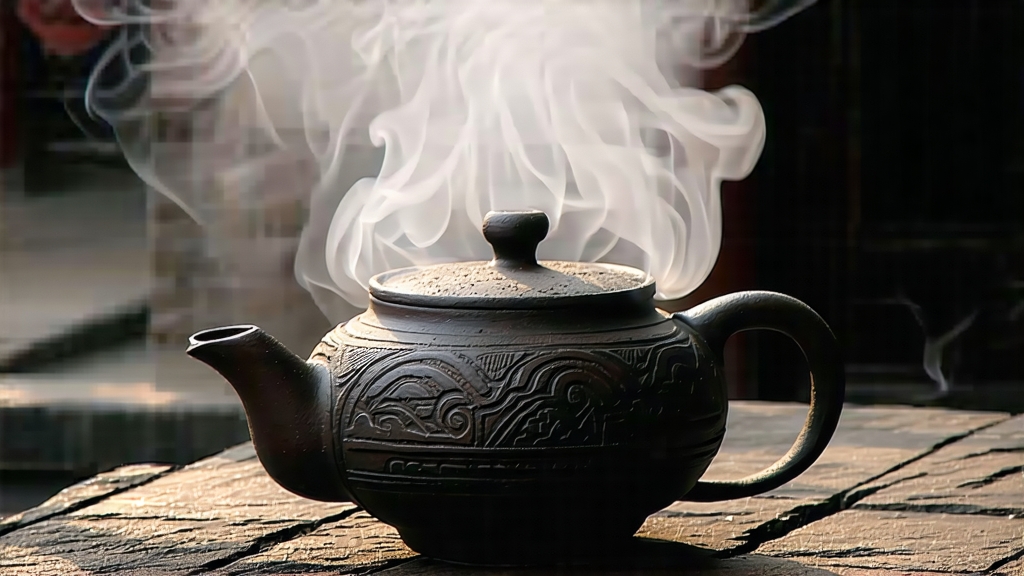
Liu Bao, literally “Six Forts,” is the quietest celebrity in the world of dark tea. While Pu-erh hoards the spotlight, this cousin from Guangxi Zhuang Autonomous Region has spent four centuries maturing in bamboo baskets, absorbing the monsoon breath of the southern mountains and the sweat of horse caravans that once carried it to Southeast Asia. To meet Liu Bao is to taste a liquid archive of Ming-dynasty trade routes, of ethnic Yao and Han co-operatives, and of a fermentation craft so subtle that it can smell like dried longan one year and like humid rainforest the next.
History: From Border Garrison to Maritime Silk Road
The name first appears in 1640, when the Qing government stationed six military forts along the Liu River basin to control the lucrative Guangxi–Guangdong corridor. Soldiers paid in tea compressed their rations into tight bricks for easy portage; the humid march southward accidentally inoculated the leaves with local microbes. By 1683 the bricks were bartered in Wuzhou’s river port for Indonesian spices, and by 1801 British logbooks record “Lew-pow tea” reaching Penang and Malacca, prized by miners for settling stomachs in tropical heat. Over centuries the tea followed the same maritime silk road as porcelain and opium, aging in the bilges of junks where salt air and constant motion coaxed it into deeper sweetness. When the railway replaced the river in 1950, Liu Bao almost vanished—until Hong Kong dim-sum restaurateurs rediscovered its ability to cut through pork fat, sparking a renaissance that now spreads from Kuala Lumpur tea houses to Brooklyn specialty cafés.
Micro-terroirs within one province
Guangxi’s folded karst creates three distinct sub-regions. The cool, foggy Rongxian highlands yield leaves high in amino acids, giving a silky broth reminiscent of cacao. Pingwu basin, wrapped in wild cinnamon forests, contributes resinous bark aromas that survive decades of aging. The lowest, swampy Tengxian floodplain produces broader leaves whose saponins generate a cooling, menthol finish. Connoisseurs speak of “three rivers, six flavors,” blending batches like a whisky master marrying barrels to ensure every basket carries the province in miniature.
Pluck and wither: the 90-minute rule
Harvest begins at dawn on the first dry day after Grain Rain. Only the standard “one bud with three leaves” is taken, because the third leaf contains the exact ratio of polyphenols to pectin that later feeds the dominant mold, Aspergillus niger. Once basketed, the leaves must reach the village trough within ninety minutes; any longer and indigenous enzymes begin oxidizing in an uncontrolled way that flattens the eventual complexity. There they are spread 4 cm thick on bamboo screens, turned every twenty minutes for six hours while mountain wind reduces moisture from 78 % to 62 %. The goal is not the grassy fragrance sought in green tea, but a faint scent of bruised apple that signals intact cell membranes ready for the next, decisive step.
Pile-fermentation: the night the tea “sweats”
At 10 p.m. the leaves are piled 70 cm deep inside a pine-sided fermentation room whose floor is pre-heated to 48 °C by burning cinnamon wood. A tarp of wet cotton traps steam, raising the core temperature to 55 °C within forty minutes. Here the tea literally sweats: beads of moisture form on leaf surfaces, carrying catechins and caffeine downward where anaerobic microbes bloom. A master monitors by smell alone; when the pile exhales the scent of steamed edamame mixed with dried jujube, he fluffs the heap to re-oxygenate. This cycle repeats five times over eighteen hours, after which the leaves have turned walnut-brown and lost 30 % of their weight, emerging as maocha—the rough tea ready for compression.
Basket aging: the breathing years
Unlike Pu-erh’s stone-pressed cakes, Liu Bao is packed into forty-kilogram cylinders woven from wild bamboo. The bamboo is neither lacquered nor lined; its microscopic pores allow a two-way exchange of air and tea oils. Warehouses are built on stilts above the Liu River so that rising mist keeps relative humidity at 75–80 %. For the first three years the tea is “restless,” undergoing secondary fermentation that drops the pH from 6.2 to 5.4 and converts bitter gallic acid into mellow theabrownin